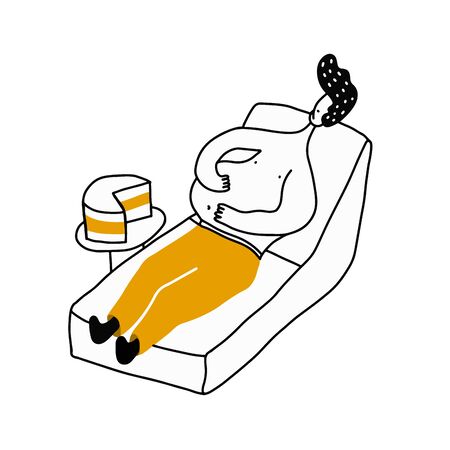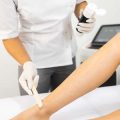1. Introduction to Fractional CO2 Laser Skin Resurfacing in the UK
Fractional CO2 laser skin resurfacing has rapidly gained traction across the UK as a leading solution for those seeking advanced skin rejuvenation. This innovative procedure leverages cutting-edge laser technology to target fine lines, wrinkles, pigmentation, and scarring with impressive precision and minimal downtime compared to traditional methods. The popularity of fractional CO2 lasers in British clinics and medical spas is fuelled by growing demand for non-surgical treatments that deliver noticeable, natural-looking results. In the UK, this treatment is often sought after by individuals looking to address signs of ageing, sun damage, acne scars, and uneven skin tone—concerns that are common due to both genetic predisposition and the unpredictable British weather. With applications ranging from full-face resurfacing to targeted spot treatments, fractional CO2 laser therapy offers a versatile approach tailored to diverse skin types and concerns, ensuring its continued prominence within the UKs ever-evolving aesthetic landscape.
2. Preparing for Your Treatment
Before undergoing Fractional CO2 Laser Skin Resurfacing in the UK, it is crucial to be well-prepared to ensure safety and optimal results. The preparation process typically begins with an initial consultation, where your suitability for treatment is assessed by a qualified practitioner. During this session, you can expect an in-depth discussion covering your medical history, skin type, aesthetic goals, and any previous cosmetic procedures. It is essential to be transparent about current medications, allergies, and underlying health conditions, as these factors directly influence your eligibility and the recommended approach.
What to Expect During Your Initial Consultation
The initial consultation serves several purposes:
- Skin Assessment: The clinician evaluates the condition of your skin and identifies target areas for treatment.
- Expectation Setting: You will discuss realistic outcomes based on your skin’s characteristics and desired improvements.
- Risk Disclosure: Potential risks and side effects are clearly communicated, with time allocated for your questions and concerns.
- Treatment Planning: A personalised treatment plan is developed, tailored to your needs and schedule.
Essential Pre-Treatment Advice
To achieve the best possible outcome, adherence to pre-treatment guidelines is vital. Below is a summary table of common recommendations provided by UK practitioners:
| Action | Description | Recommended Timing |
|---|---|---|
| Avoid Sun Exposure | Minimise direct sun exposure or use broad-spectrum SPF 50+ | At least 4 weeks prior |
| Suspend Certain Medications | Discontinue blood thinners or retinoids after consulting your GP | 1-2 weeks prior |
| No Recent Treatments | Avoid recent chemical peels or other laser therapies on target area | 4 weeks prior |
| Pain Management Plan | Discuss anaesthetic options (topical/local) with your provider | During consultation/planning stage |
| Cleansing Protocols | Follow specific cleansing routines as advised by clinic staff | 24 hours prior |
UK-Specific Considerations: Regulations and Guidelines
The UK has robust regulations governing the use of medical lasers. Only trained professionals registered with the Care Quality Commission (CQC) or equivalent regulatory bodies should perform Fractional CO2 Laser treatments. Clinics must adhere to strict safety protocols, including device maintenance standards and infection control measures. Additionally, informed consent documentation is a mandatory step before proceeding. These measures are designed to uphold patient safety and maintain high-quality care standards across England, Scotland, Wales, and Northern Ireland.
Your Checklist Before Treatment Day:
- Confirm practitioner credentials (registration with GMC/NMC/HCPC or CQC oversight)
- Review all pre-care instructions from your clinic thoroughly
- Avoid tanning beds or self-tanning products in the month leading up to treatment
- Arrange transport home if sedation or strong pain relief is planned post-procedure
- Have realistic expectations set through consultation feedback and written materials provided by the clinic team

3. What Happens During the Procedure
On the day of your fractional CO2 laser skin resurfacing, you can expect a carefully managed process designed for both safety and comfort. Here’s a step-by-step overview tailored for UK patients:
Arrival and Preparation
Upon arrival at the clinic—typically a CQC-registered facility in the UK—you will be welcomed by a trained practitioner. After confirming your details and reviewing your medical history, the treatment area is thoroughly cleansed to remove makeup, oils, or impurities. A topical anaesthetic cream is applied to numb the skin, which usually takes around 30 to 45 minutes to take effect.
The Technology Involved
Fractional CO2 lasers employ cutting-edge technology that emits a series of microbeams into the skin, creating thousands of tiny thermal zones. This approach targets damaged skin while leaving surrounding tissue intact, accelerating healing and reducing downtime. Leading UK clinics typically use FDA-cleared and CE-marked devices for safety and efficacy.
The Laser Session
Once your skin is numb, the practitioner will provide you with protective eyewear. The laser handpiece is then passed across the targeted areas in a precise grid-like pattern. You may feel a warm sensation or mild tingling as the device works; most British patients describe this as tolerable thanks to the anaesthetic.
Duration and Immediate Care
The procedure itself usually lasts between 20 to 60 minutes depending on the size of the area treated. After completion, a soothing serum or cooling gel is applied to minimise discomfort. Before leaving, you’ll receive aftercare instructions tailored for UK climates—highlighting sun protection even during typically overcast British weather.
Overall, fractional CO2 laser resurfacing in the UK blends advanced technology with local clinical standards, ensuring patients know exactly what to anticipate on treatment day.
4. Immediate Aftercare and Recovery
Proper aftercare is crucial following a fractional CO2 laser skin resurfacing treatment, especially in the UK where climate and lifestyle factors may influence recovery. British clinics generally provide comprehensive post-treatment guidelines to ensure optimal healing and minimise complications. Below, we outline the standard protocols, expected recovery timelines, and typical skin responses during the initial days post-procedure.
Guidelines for Post-Treatment Care
- Cleansing: Use a gentle, fragrance-free cleanser as recommended by your practitioner. Avoid hot water; instead, rinse with lukewarm or cool water to soothe the skin.
- Moisturising: Apply a non-comedogenic moisturiser or ointment prescribed by your clinic to maintain skin hydration and support barrier repair.
- Sun Protection: Strictly avoid direct sun exposure. Use a broad-spectrum SPF 50+ sunscreen once the skin barrier has sufficiently healed (typically after 7–10 days).
- Avoid Makeup: Refrain from applying makeup until peeling has subsided and the skin is no longer sensitive—usually one week post-treatment.
- No Picking: Allow flaking or peeling skin to shed naturally; picking can lead to scarring or hyperpigmentation.
- Pain Management: Mild discomfort, swelling, or stinging is common. Paracetamol can be used if needed, but avoid NSAIDs unless advised by your practitioner.
Recovery Timelines in UK Clinics
| Post-Treatment Day | Typical Skin Response | Recommended Care |
|---|---|---|
| Day 1–2 | Redness, swelling, warm sensation, mild oozing | Cleansing with cool water, apply ointments, rest at home |
| Day 3–5 | Skin darkening, tightness, onset of peeling/flaking | Avoid picking, continue moisturising, gentle cleansing |
| Day 6–10 | Peeling subsides, pinkish new skin emerges | Sunscreen if going outdoors, introduce light moisturisers |
| After Day 10 | Mild redness may persist; normal activities resumed | Continue sun protection and gentle skincare routine |
Typical Skin Responses: What to Expect in the Initial Days
The most common immediate response is pronounced redness—often likened to severe sunburn—accompanied by swelling that typically peaks within the first 48 hours. Tingling or stinging sensations are also normal. By day three or four, you’ll notice tightening and darkening of treated areas followed by visible peeling. It’s essential not to disturb this natural exfoliation process. British patients frequently report being able to return to remote work or low-contact activities within a few days, though public-facing roles may require waiting until visible redness and flaking subside. Each individual’s healing rate may vary slightly due to factors such as age, general health, and adherence to aftercare protocols provided by UK practitioners.
5. Results and Long-Term Skin Management
When to Expect Visible Improvements
After undergoing Fractional CO2 Laser Skin Resurfacing, most patients in the UK will begin to notice visible improvements within one to two weeks post-treatment, as initial redness and swelling subside. Full results typically develop over a period of two to three months, as collagen remodelling continues beneath the surface. The degree of improvement depends on individual skin concerns, but patients generally report smoother texture, reduced pigmentation, and diminished fine lines.
Advice on Maintaining Results in the UK’s Climate
The unpredictable British weather poses unique challenges for post-laser skin care. High humidity, frequent rain, and low winter sunlight all influence recovery. It is crucial to prioritise daily use of broad-spectrum sunscreen—even on cloudy days—to protect sensitive new skin from UV exposure. Additionally, applying a quality moisturiser helps combat dryness caused by indoor heating during colder months. Wearing a hat or using an umbrella can further shield treated areas when outdoors.
Integrating Skin Health Routines
To prolong the benefits of your treatment, adopt a consistent skincare regime tailored to your skin type and lifestyle. Gentle cleansing with non-abrasive products prevents irritation, while serums containing antioxidants such as Vitamin C support ongoing repair and protection. Regular hydration—both through topical creams and adequate water intake—ensures optimal healing. For those living in urban areas like London or Manchester, incorporating pollution-fighting ingredients may help counteract environmental stressors.
Professional Guidance
Your dermatologist or aesthetic practitioner should provide bespoke aftercare instructions suited to your needs and the British climate. Routine follow-up appointments are recommended to monitor progress and address any concerns promptly.
Summary
Visible improvements from Fractional CO2 Laser Skin Resurfacing can be expected within weeks, but maintaining results requires diligent sun protection, moisture retention, and ongoing professional support tailored to life in the UK.
6. Potential Risks and How to Address Them
Common Side Effects of Fractional CO2 Laser Treatment
Fractional CO2 laser skin resurfacing, while effective, does carry certain risks and side effects that are important for UK patients to understand. Common reactions following treatment include redness, swelling, and a sensation similar to sunburn. These symptoms are typically mild to moderate and subside within several days. Other expected after-effects might include peeling or crusting as the skin heals, which is a normal part of the recovery process. Temporary hyperpigmentation or lightening of the skin may also occur, especially in individuals with darker complexions.
How UK Clinics Manage Complications
Reputable UK clinics adhere to strict safety protocols to minimise potential complications. Clinicians will conduct a comprehensive pre-treatment consultation to assess suitability and discuss any underlying health conditions or medications that could increase risk. During the procedure, advanced cooling devices and calibrated laser settings are utilised to protect the skin. Post-treatment care instructions are provided, including recommendations for gentle cleansing, moisturising, and sun protection—crucial in the often unpredictable British climate.
Managing More Serious Reactions
Although rare, more serious complications can include infection, scarring, prolonged erythema (redness), or persistent changes in pigmentation. UK clinics typically offer follow-up appointments to monitor healing and address any concerns promptly. Should signs of infection (such as increased pain, discharge, or fever) develop, clinicians are prepared to prescribe topical or oral antibiotics. Early intervention helps prevent escalation and supports optimal recovery.
When to Seek Further Medical Advice
If you notice severe swelling, blistering, extensive pain, signs of an allergic reaction, or no improvement after several days post-procedure, it is essential to contact your clinic or GP without delay. In the UK, seeking timely medical advice ensures that complications are managed effectively and long-term outcomes are safeguarded. Remember: open communication with your practitioner is key to a safe and successful fractional CO2 laser experience.
7. Choosing a Qualified Practitioner in the UK
Tips for Selecting Accredited UK Practitioners
When considering fractional CO2 laser skin resurfacing in the UK, selecting a reputable and accredited practitioner is paramount. Look for clinics and professionals who are registered with the Care Quality Commission (CQC) in England or corresponding regulatory bodies in Scotland, Wales, and Northern Ireland. Memberships in professional organisations such as the British Association of Dermatologists (BAD) or the British College of Aesthetic Medicine (BCAM) further signify adherence to high clinical standards. Always ensure your practitioner has specific training and experience with fractional CO2 lasers, as well as comprehensive knowledge of skin types commonly found within the UK population.
Understanding Price Variations
The cost of fractional CO2 laser resurfacing can vary considerably across the UK. Factors influencing price include clinic location—London-based practices often command higher fees—the expertise of the practitioner, and the complexity or size of the treatment area. While tempting, avoid basing your decision solely on cost; excessively low prices may indicate shortcuts in training, technology, or aftercare. Instead, seek transparent pricing that includes consultation, follow-up appointments, and any recommended post-procedure products.
Ensuring High Standards of Safety and Care
Safety should always be a priority when undergoing any advanced skin treatment. During your consultation, ask detailed questions about infection control protocols, equipment maintenance, and contingency plans for managing side effects. A qualified practitioner will provide a thorough pre-treatment assessment and clear aftercare instructions tailored to UK weather conditions and typical lifestyle factors. Additionally, reputable providers encourage realistic expectations regarding downtime and results, supporting you throughout recovery with robust aftercare support.
Key Takeaways for UK Patients
- Verify your practitioners accreditations with CQC or local regulatory authorities
- Choose clinics affiliated with established UK dermatology or aesthetic medicine bodies
- Request information about practitioner experience with fractional CO2 lasers
- Understand all costs upfront—including consultations and aftercare—to avoid surprises
- Prioritise safety by reviewing hygiene practices and emergency protocols
Your Next Steps
By carefully selecting an accredited professional who offers transparent pricing and prioritises patient safety, you can ensure a positive experience with fractional CO2 laser resurfacing in the UK—leading to both optimal results and peace of mind.


